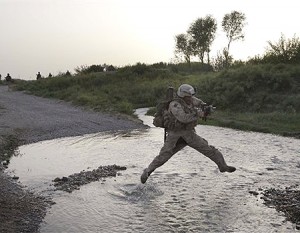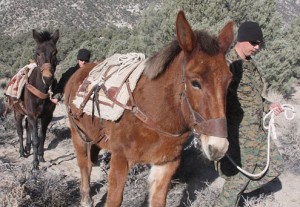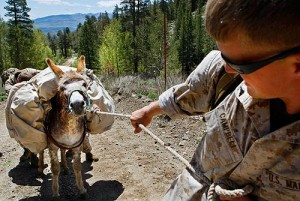The Iraqi government has moved to sharply restrict the movement and activities of U.S. forces in a new reading of a six-month-old U.S.-Iraqi security agreement that has startled American commanders and raised concerns about the safety of their troops.
In a curt missive issued by the Baghdad Operations Command on July 2 — the day after Iraqis celebrated the withdrawal of U.S. troops to bases outside city centers — Iraq’s top commanders told their U.S. counterparts to “stop all joint patrols” in Baghdad. It said U.S. resupply convoys could travel only at night and ordered the Americans to “notify us immediately of any violations of the agreement.”
The strict application of the agreement coincides with what U.S. military officials in Washington say has been an escalation of attacks against their forces by Iranian-backed Shiite extremist groups, to which they have been unable to fully respond.
If extremists realize “some of the limitations that we have, that’s a vulnerability they could use against us,” a senior U.S. military intelligence official said. “The fact is that some of these are very politically sensitive targets” thought to be close to the Shiite-dominated Iraqi government of Prime Minister Nouri al-Maliki.
The new guidelines are a reflection of rising tensions between the two governments. Iraqi leaders increasingly see the agreement as an opportunity to show their citizens that they are now unequivocally in charge and that their dependence on the U.S. military is minimal and waning.
The June 30 deadline for moving U.S. troops out of Iraqi towns and cities was the first of three milestones under the agreement. The U.S. military is to decrease its troop levels from 130,000 to 50,000 by August of next year.
U.S. commanders have described the pullout from cities as a transition from combat to stability operations. But they have kept several combat battalions assigned to urban areas and hoped those troops would remain deeply engaged in training Iraqi security forces, meeting with paid informants, attending local council meetings and supervising U.S.-funded civic and reconstruction projects.
The Americans have been taken aback by the new restrictions on their activities. The Iraqi order runs “contrary to the spirit and practice of our last several months of operations,” Maj. Gen. Daniel P. Bolger, commander of the Baghdad division, wrote in an e-mail obtained by The Washington Post.
“Maybe something was ‘lost in translation,’ ” Bolger wrote. “We are not going to hide our support role in the city. I’m sorry the Iraqi politicians lied/dissembled/spun, but we are not invisible nor should we be.” He said U.S. troops intend to engage in combat operations in urban areas to avert or respond to threats, with or without help from the Iraqis.
“This is a broad right and it demands that we patrol, raid and secure routes as necessary to keep our forces safe,” he wrote. “We’ll do that, preferably partnered.”
U.S. commanders have not publicly described in detail how they interpret the agreement’s vaguely worded provision that gives them the right to self-defense. The issue has bedeviled them because commanders are concerned that responding quickly and forcefully to threats could embarrass the Iraqi government and prompt allegations of agreement violations.
A spate of high-casualty suicide bombings in Shiite neighborhoods, attributed to al-Qaeda in Iraq and related Sunni insurgent groups, has overshadowed the increase of attacks by Iran-backed Shiite extremists, U.S. official say.
Officials agreed to discuss relations with the Iraqi government and military, and Iranian support for the extremists, only on the condition of anonymity because those issues involve security, diplomacy and intelligence.
The three primary groups — Asaib al-Haq, Khataib Hezbollah and the Promised Day Brigades — emerged from the “special groups” of the Jaish al-Mahdi (JAM) militia of radical Iraqi Shiite cleric Moqtada al-Sadr, which terrorized Baghdad and southern Iraq beginning in 2006. All receive training, funding and direction from Iran’s Revolutionary Guard Corps Quds Force.
“One of the things we still have to find out, as we pull out from the cities, is how much effectiveness we’re going to have against some of these particular target sets,” the military intelligence official said. “That’s one of the very sensitive parts of this whole story.”
As U.S. forces tried to pursue the alleged leaders of the groups and planned missions against them, their efforts were hindered by the complicated warrant process and other Iraqi delays, officials said.
Last month, U.S. commanders acquiesced to an Iraqi government request to release one of their most high-profile detainees, Laith Khazali. He was arrested in March 2007 with his brother, Qais, who is thought to be the senior operational leader of Asaib al-Haq. The United States thinks they were responsible for the deaths of five American soldiers in Karbala that year.
Maliki has occasionally criticized interference by Shiite Iran’s Islamic government in Iraqi affairs. But he has also maintained close ties to Iran and has played down U.S. insistence that Iran is deeply involved, through the Quds Force, in training and controlling the Iraqi Shiite extremists.
U.S. intelligence has seen “no discernible increase in Tehran’s support to Shia extremists in recent months,” and the attack level is still low compared with previous years, U.S. counterterrorism official said. But senior military commanders maintained that Iran still supports the Shiite militias, and that their attacks now focus almost exclusively on U.S. forces.
After a brief lull, the attacks have continued this month, including a rocket strike on a U.S. base in Basra on Thursday night that killed three soldiers.
The acrimony that has marked the transition period has sowed resentment, according to several U.S. soldiers, who said the confidence expressed by Iraqi leaders does not match their competence.
“Our [Iraqi] partners burn our fuel, drive roads cleared by our Engineers, live in bases built with our money, operate vehicles fixed with our parts, eat food paid for by our contracts, watch our [surveillance] video feeds, serve citizens with our [funds], and benefit from our air cover,” Bolger noted in the e-mail.
A spokesman for Bolger would not say whether the U.S. military considers the Iraqi order on July 2 valid. Since it was issued, it has been amended to make a few exemptions. But the guidelines remain far more restrictive than the Americans had hoped, U.S. military officials said.
Brig. Gen. Heidi Brown, the commander overseeing the logistical aspects of the withdrawal, said Iraqi and U.S. commanders have had fruitful discussions in recent days about the issue.
“It’s been an interesting time, and I think we’ve sorted out any misunderstandings that were there initially,” she said in an interview Friday.
One U.S. military official here said both Iraqi and American leaders on the ground remain confused about the guidelines. The official said he worries that the lack of clarity could trigger stalemates and confrontations between Iraqis and Americans.
“We still lack a common understanding and way forward at all levels regarding those types of situations,” he said, referring to self-defense protocols and the type of missions that Americans cannot conduct unilaterally.
In recent days, he said, senior U.S. commanders have lowered their expectations.
“I think our commanders are starting to back off the notion that we will continue to execute combined operations whether the Iraqi army welcomes us with open arms or not,” the U.S. commander said. “However, we are still very interested in and concerned about our ability to quickly and effectively act in response to terrorist threats” against U.S. forces.
The General said “Our [Iraqi] partners burn our fuel, drive roads cleared by our Engineers, live in bases built with our money, operate vehicles fixed with our parts, eat food paid for by our contracts, watch our [surveillance] video feeds, serve citizens with our [funds], and benefit from our air cover.” Very well. Then don’t clear the roads, provide them with air cover, supply them logistics, or give them vehicle parts. It’s time for daddy to take away the car keys and see just how far junior thinks he can get without his old man’s money and stuff.
Seriously though. This is both remarkable and dangerous. A short review shows that The Captain’s Journal was dead set against the Iraqi-U.S. SOFA in any form and under any construction. The SOFA already prohibits any kind of military operations against any of Iraq’s neighbors, even if the neighbors are guilty of supplying weapons and fighters to undermine the Iraqi government. This isn’t surprising, given that Maliki sought Iran’s approval of the SOFA.
Lesson #1: The stupid desire for “legitimacy” on the world stage created the situation in which we were seeking the approval of both Iraq and the U.N. for our continued presence in Iraq. The mistake was in ever agreeing to a SOFA to begin with. Too much national treasure (in blood and wealth) has been invested to allow Iraqi politicians to determine the disposition of U.S. forces in Iraq. History has taught us the lesson that we cannot even fully trust U.S. politicians with the safety, troop strength and mission of U.S. troops. A fortiori, the Iraqi politicians can be trusted even less.
Lesson #2: Legal agreements are always subject to “interpretations.” Neither agreements nor interpretations should take priority over force protection of U.S. troops and the right of self defense. Restricted lines of logistics is by its very definition an infringement on force protection. When such demands are made by the ISF, they must be ignored.
Lesson #3: The support for the ISF must cease. If the ISF wants to take on any remaining insurgency on its own, we should oblige them. The only way to ascertain whether the ISF is ready to defend the nation is to allow them to take the training wheels off. This part of it is a good sign. Let them tackle problems of discipline, logistics, parts and supplies, intelligence and operations management without U.S. assistance. If they fail they will back off of their demands. If they succeed, then it’s time to leave Iraq.
However these lessons play out, we cannot and must not allow any agreement to threaten the safety of U.S. troops. Any commander who does that should be relieved of command. Finally, since Hamid Karzai has made his desired for an Afghanistan-U.S. SOFA known, this should serve as a harbinger to the way we should address Afghanistan. The U.S. should not agree to an Afghanistan SOFA, no matter what international pressure is brought to bear.






